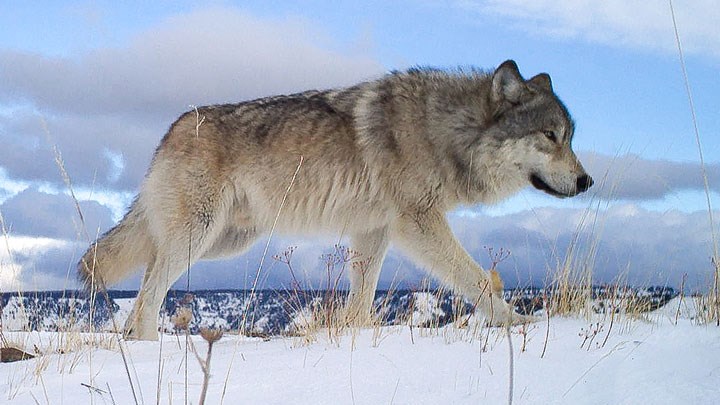
by Phil and Karen Phillips - Thursday, April 27, 2023

Colorado continues to grapple with pending gray wolf reintroduction by early 2024, thanks to animal rights extremists groups’ ballot measure titled Proposition 114 that passed by less than 1 percent—50.3 percent to 49.7 percent—in November 2020. While the farmers, ranchers and hunting and wildlife conservation-backed groups that comprise the Colorado Stop the Wolf Coalition are fighting forced reintroduction at every turn, so far no luck. But there is at least a small nugget of hope in upholding the state’s wildlife management authority of the species in the form of Colorado Senate Bill 23-256.
If passed, S.B. 23-256 would serve up a critical prerequisite prior to the state’s wolf launch by mandating that the U.S. Fish and Wildlife Service (USFWS) designate the wolves being introduced as an “experimental population.” This classification, known as a 10(j) Rule under the Endangered Species Act (ESA), would give the state more management authority over the wolves as they establish packs and take hold in their new surroundings. If the wolves are reintroduced without being designated as an experimental population, Colorado wildlife managers will be limited in their management actions. S.B. 23-256 is set for a hearing today, Thursday, April 27.
“Assuring there is a 10(j) designation before reintroducing is crucial to give the Colorado Parks and Wildlife Department the tools they need to ensure the wolf reintroduction is done in a manner that takes into account the needs of all parties affected,” explained Travis Couture-Lovelady, Colorado State Director for the NRA Institute for Legislative Action. “When Prop 114 passed, since the wolves were delisted, it was passed with the understanding that CPW had full management authority.” However, since gray wolves have been relisted, he said this is no longer the case.
“The 10(j) designation gets it as close as possible to the circumstances surrounding management authority when Coloradans voted to put wolves on the ground by the ballot,” Couture-Lovelady added. “This bill is not a delay tactic, rather it is about putting in place a smart management plan for wolves in Colorado.”
Standing with farmers, ranchers and even Colorado Parks and Wildlife (CPW), which also opposed the ballot measure, Colorado’s Stop the Wolf Coalition points out a key fact: By definition, wolves should not be able to be “reintroduced” into a state where they already exist. Wolves are already present in northern Colorado as new wolf packs disperse out of southern Wyoming. CPW already has a management plan in place for those wolves. Wouldn’t forcing more wolves into the state make the scenario only tougher to manage amid expanding human populations and development?
The NRA, Rocky Mountain Elk Foundation (RMEF) and countless other hunting and conservation-backed members of the Colorado Stop the Wolf Coalition remain focused on protecting wildlife, livestock and pets. It is a given that residents will experience conflicts with wolves, that wildlife populations such as deer and elk will suffer—though the RMEF notes that many big-game populations are already struggling in the southwest portion of the state—and that livestock predation will rise. The initial reintroduction will take place in two areas of Colorado. One is near Vail and Glenwood Springs. The other is in our back yard along the Hwy. 50 corridor between Monarch Pass, Gunnison and Montrose. Our Colorado home happens to be along Hwy. 50 outside Montrose, so how long will it be before wolves show up in our own alfalfa fields?
Sadly, as the RMEF points out, “We have witnessed 20-plus years of lies and litigation in the Northern Rockies concerning wolves. This Colorado effort is driven by the same groups using the same tactics to accomplish their agenda.”
When it comes to wolves in the Northern Rockies, which were introduced in 1995-1996, initial recovery goals were set, agreed upon and met in 2002. However, final delisting did not occur in Idaho and Montana until 2011. As this NRA Hunters’ Leadership Forum website tracked, Wyoming, for example, was not permitted to manage its wolves until 2017. Animal rights and environmental extremist groups used—and continue to use—litigation and misinformation to delay the delisting of gray wolves throughout their range.
Please check back with this NRA website as details unfold. In the meantime, urge members of the Colorado House to embrace the common-sense mandate coming in the form of S.B. 23-256. Share how a 10(j) experimental population designation ensures the specified population will be treated as threatened under the ESA, regardless of the species’ designation elsewhere in its range, while giving wildlife managers the discretion to devise management programs for that population.
E-mail your comments/questions about this site to:
[email protected]
